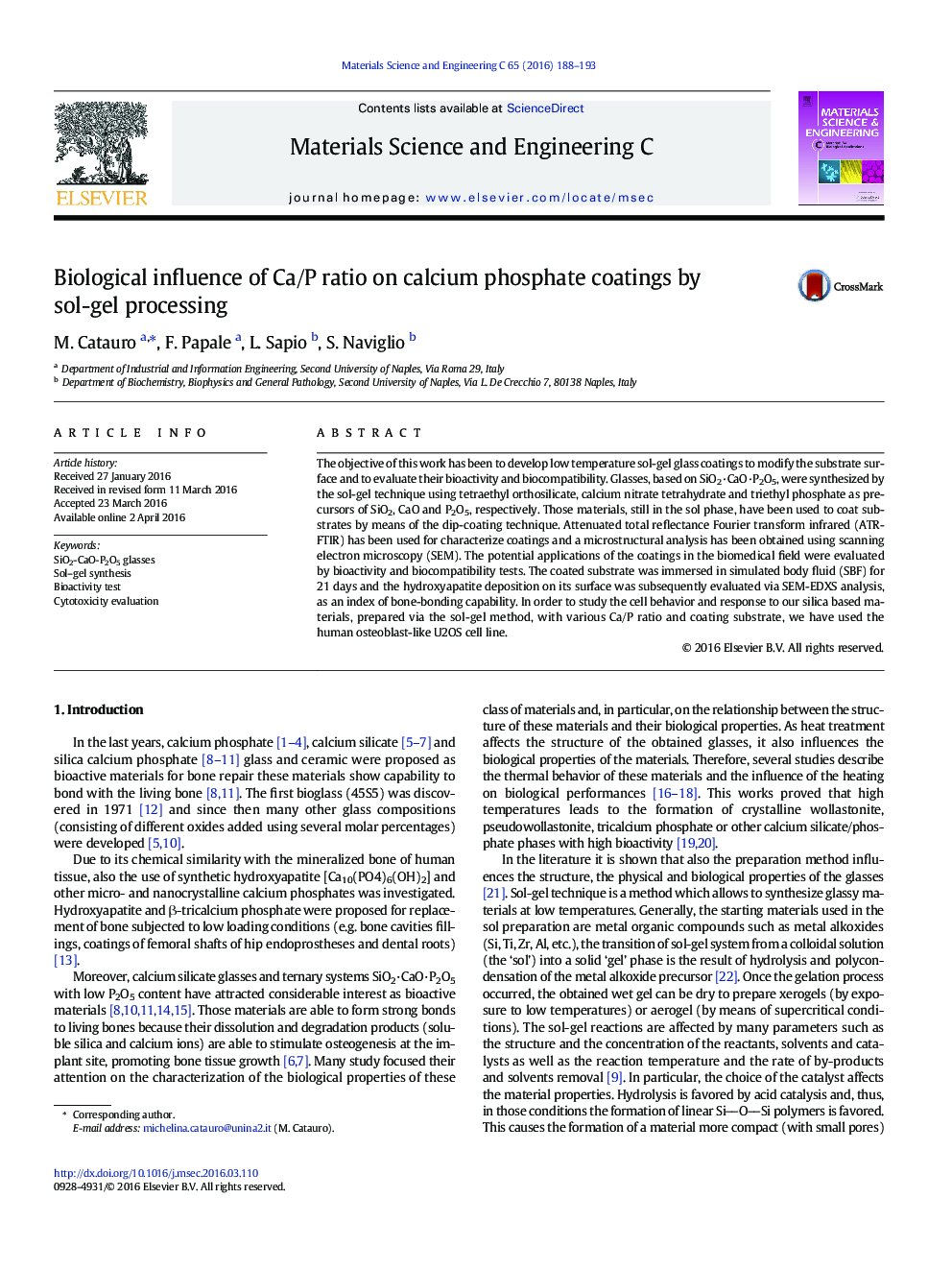| Article ID | Journal | Published Year | Pages | File Type |
|---|---|---|---|---|
| 7867138 | Materials Science and Engineering: C | 2016 | 6 Pages |
Abstract
The objective of this work has been to develop low temperature sol-gel glass coatings to modify the substrate surface and to evaluate their bioactivity and biocompatibility. Glasses, based on SiO2·CaO·P2O5, were synthesized by the sol-gel technique using tetraethyl orthosilicate, calcium nitrate tetrahydrate and triethyl phosphate as precursors of SiO2, CaO and P2O5, respectively. Those materials, still in the sol phase, have been used to coat substrates by means of the dip-coating technique. Attenuated total reflectance Fourier transform infrared (ATR-FTIR) has been used for characterize coatings and a microstructural analysis has been obtained using scanning electron microscopy (SEM). The potential applications of the coatings in the biomedical field were evaluated by bioactivity and biocompatibility tests. The coated substrate was immersed in simulated body fluid (SBF) for 21 days and the hydroxyapatite deposition on its surface was subsequently evaluated via SEM-EDXS analysis, as an index of bone-bonding capability. In order to study the cell behavior and response to our silica based materials, prepared via the sol-gel method, with various Ca/P ratio and coating substrate, we have used the human osteoblast-like U2OS cell line.
Related Topics
Physical Sciences and Engineering
Materials Science
Biomaterials
Authors
M. Catauro, F. Papale, L. Sapio, S. Naviglio,
